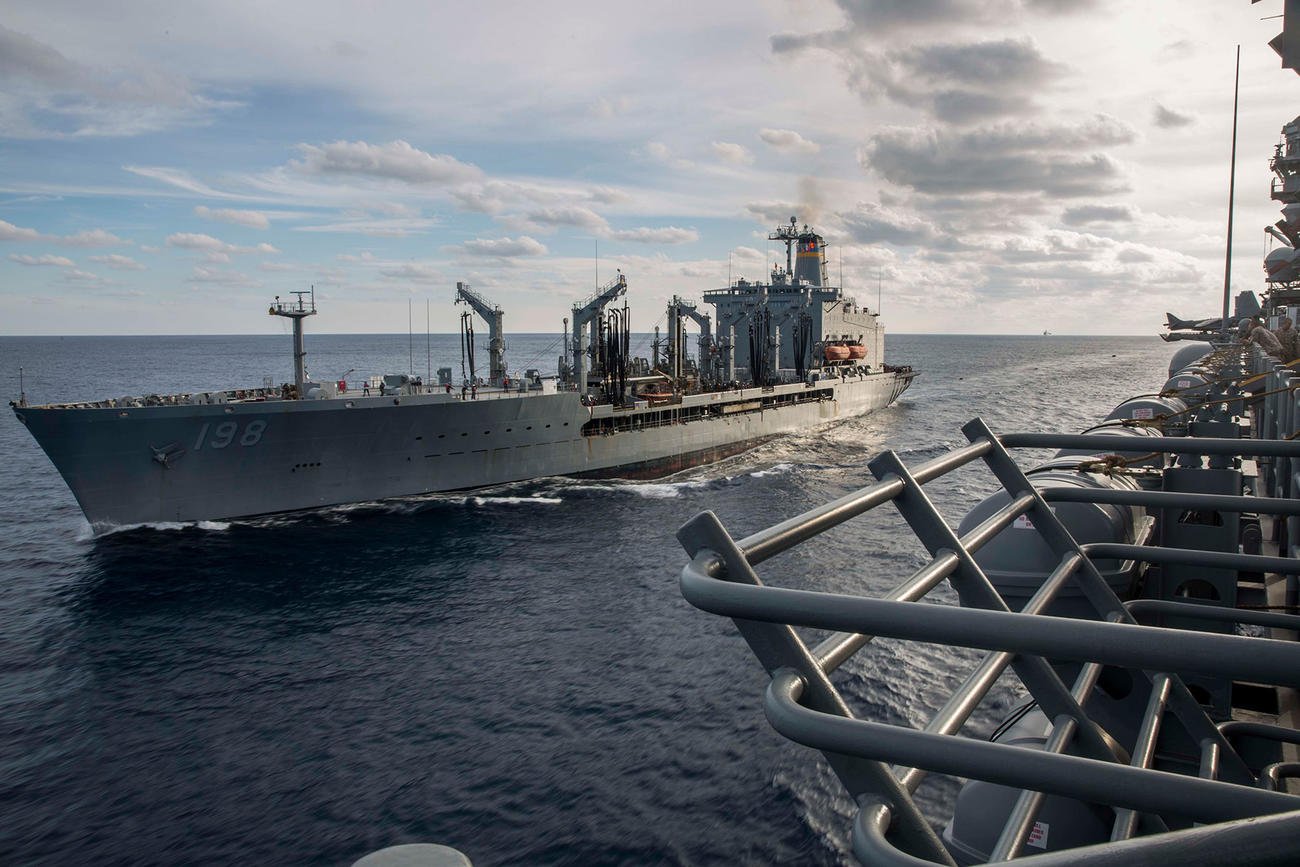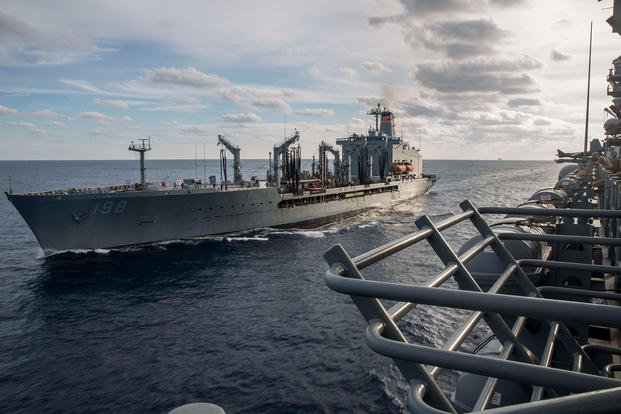

The Navy oiler Big Horn sustained damage while operating off the coast of Oman on Monday, with reports that the Military Sealift Command vessel suffered flooding and damage to its rudder post.
A Navy official confirmed Tuesday that the tanker was damaged “while operating in the 5th Fleet area of operations” but declined to describe the nature of the damage, saying only that an investigation into the incident is underway.
“It would be inappropriate to speculate on the cause of damage at this time,” the official said. “All crew members are safe, and we are assessing the situation right now.”
Read Next: ‘No Hesitation’: Vietnam’s Lifesaving ‘Dustoff’ Medevac Crews to Get Congressional Gold Medal
The maritime publication gCaptain reported the incident following multiple tips and social media posts showing damage to the vessel, a Kaiser-class, single-hulled oiler. The Big Horn had been refueling and resupplying ships in the Abraham Lincoln Strike Group. The strike group arrived in the Middle East in August, joining the Theodore Roosevelt Strike Group as tensions have risen following the Oct. 7, 2023, attack on Israel by Hamas.
Subsequent strikes on Gaza by Israel, attacks on civilian shipping in the Red Sea by Iranian-backed Houthis, and mounting Israeli attacks on Lebanon and Hezbollah have left the region simmering.
The Navy would not confirm whether the Big Horn was heading to port under tow or on its own power. It is expected to be assessed for damage in Dubai.
The 33-year-old ship was built by Avondale Shipyard and entered service in 1992. Military Sealift Command operates 14 Kaiser-class vessels including the Big Horn, at least six of which are slated for removal from service in the next five years, to be replaced by the John Lewis class — 746-foot ships that can carry nearly 50,000 tons of fuel and supplies.
The Big Horn is the only Navy oiler operating in the Middle East. According to MarineTraffic, an app that provides real time and approximate locations for maritime vessels worldwide, seven ships in the class currently are operating in U.S. waters, five are in the Pacific area of operations, and one is near Italy.
The USNS John Lewis was last reported in Portland, Oregon, while the Harvey Milk, also a Lewis-class tanker, is in Norfolk, Virginia.
The Navy official did not say whether a replacement vessel would be sent to the Middle East or if the service is considering contracting a civilian ship to perform replenishments for the Navy fleet currently in the Persian Gulf.
The carrier Theodore Roosevelt left the Middle East earlier this month, according to the Pentagon.
Military Sealift Command, which manages the vessels run by civilian mariners, is struggling with manpower issues and has drafted plans to remove crews from ships as the result of not having enough qualified mariners, according to a report in August from USNI News.
Related: Navy Gave Combat Action Ribbon to 7 Ships as More Details of Red Sea Combat Emerge
